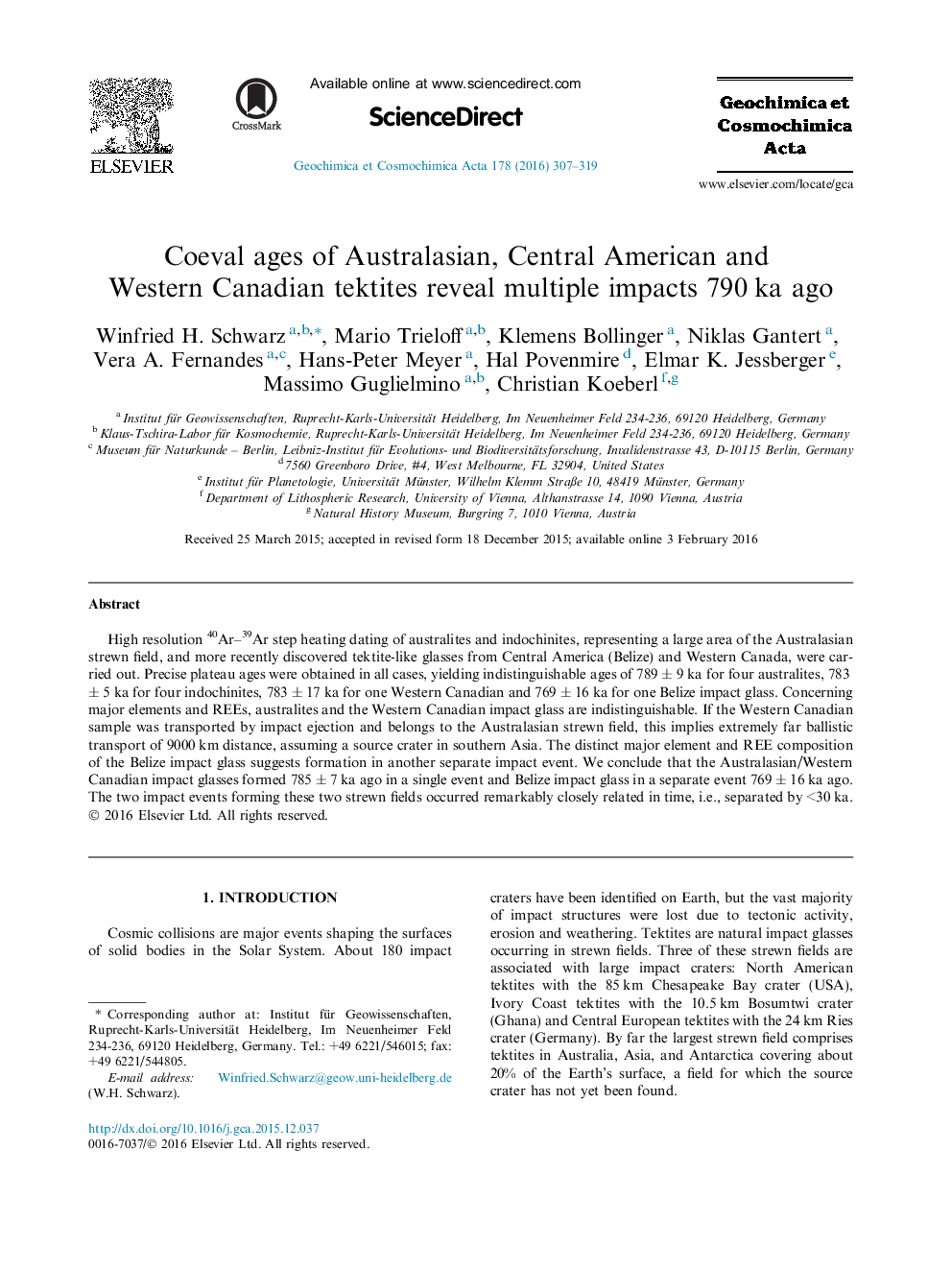| Article ID | Journal | Published Year | Pages | File Type |
|---|---|---|---|---|
| 6437545 | Geochimica et Cosmochimica Acta | 2016 | 13 Pages |
High resolution 40Ar-39Ar step heating dating of australites and indochinites, representing a large area of the Australasian strewn field, and more recently discovered tektite-like glasses from Central America (Belize) and Western Canada, were carried out. Precise plateau ages were obtained in all cases, yielding indistinguishable ages of 789 ± 9 ka for four australites, 783 ± 5 ka for four indochinites, 783 ± 17 ka for one Western Canadian and 769 ± 16 ka for one Belize impact glass. Concerning major elements and REEs, australites and the Western Canadian impact glass are indistinguishable. If the Western Canadian sample was transported by impact ejection and belongs to the Australasian strewn field, this implies extremely far ballistic transport of 9000 km distance, assuming a source crater in southern Asia. The distinct major element and REE composition of the Belize impact glass suggests formation in another separate impact event. We conclude that the Australasian/Western Canadian impact glasses formed 785 ± 7 ka ago in a single event and Belize impact glass in a separate event 769 ± 16 ka ago. The two impact events forming these two strewn fields occurred remarkably closely related in time, i.e., separated by <30 ka.
